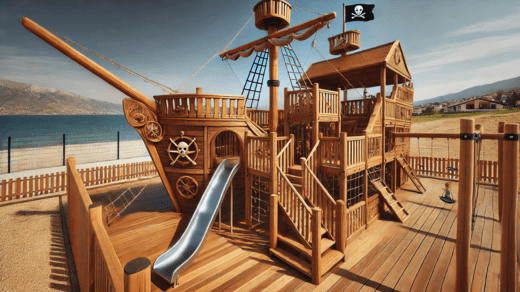
timber playground equipment
Creating a vibrant and engaging outdoor environment is essential for schools to foster learning, creativity, and physical development among children. Modern educational spaces are embracing innovative outdoor solutions like timber playground equipment, pirate ship-themed play structures, and trim trails installed to enhance the overall school experience. Additionally, incorporating timber classrooms for schools brings natural elements into learning spaces, offering numerous benefits. Here’s an in-depth look at these elements and their impact.
The Appeal of Timber Playground Equipment
Timber has become a preferred material for playground structures due to its durability, aesthetic appeal, and sustainability. Unlike traditional metal or plastic equipment, timber offers a warm, natural look that seamlessly blends with outdoor surroundings. It’s also a safer option as it tends to stay cooler in the sun and has less harsh edges, making it ideal for children.
Schools and communities investing in timber playground equipment benefit from its adaptability to various themes and designs. From simple climbing frames to elaborate multi-level structures, timber allows for creative configurations that spark imaginative play and physical activity. This type of equipment encourages children to explore, climb, and develop motor skills, all while enjoying the fresh air.
Timber Classrooms: A Natural Learning Environment
timber classrooms for schools have gained popularity as educational institutions increasingly prioritize eco-friendly and versatile infrastructure. These modular wooden structures are not only cost-effective but also provide a warm, inviting atmosphere conducive to learning. Timber classrooms are especially useful for accommodating growing student populations or creating specialized learning spaces like art rooms, libraries, or even outdoor science labs.
The use of timber in construction contributes to a school’s sustainability goals. Wood is a renewable resource with low environmental impact, making it an excellent choice for schools seeking to reduce their carbon footprint. Moreover, these classrooms are highly customizable and can be designed to incorporate natural light and ventilation, promoting a healthier learning environment.
Pirate Ship Playgrounds: Adventure on the High Seas
Nothing sparks a child’s imagination quite like a pirate ship-themed playground. These structures go beyond standard play equipment by offering an immersive experience that fosters creativity and storytelling. A piratte ship playgrounds encourages children to role-play as captains, sailors, or adventurers, building social skills and teamwork in the process.
Designed with features like slides, climbing nets, and even lookout towers, pirate ship playgrounds captivate children of all ages. The use of timber enhances the authenticity of the design, providing a sturdy and visually appealing structure that can withstand heavy use. Schools and parks installing these themed play areas find them to be a standout feature that draws both excitement and community engagement.
Trim Trails Installed for Physical Fitness
Incorporating trim trails into school grounds promotes physical fitness and challenges students to test their balance, coordination, and strength. trim trails installed as part of an outdoor learning environment provide children with opportunities to engage in physical activity in a fun and non-competitive setting.
Typically made of timber, trim trails consist of interconnected obstacles such as balance beams, stepping stones, and climbing frames. They are highly versatile and can be tailored to suit different age groups and fitness levels. Trim trails encourage children to take risks, overcome challenges, and develop resilience—all vital skills for personal growth.
Conclusion
The integration of timber playground equipment, themed structures like pirate ship playgrounds, and outdoor learning spaces such as timber classrooms and trim trails transforms school grounds into multifunctional hubs of learning and play. These additions not only enhance the physical and cognitive development of students but also align with sustainability goals, making them an excellent investment for educational institutions.





